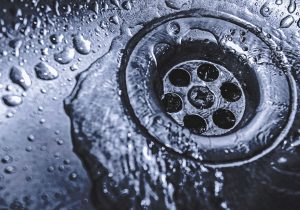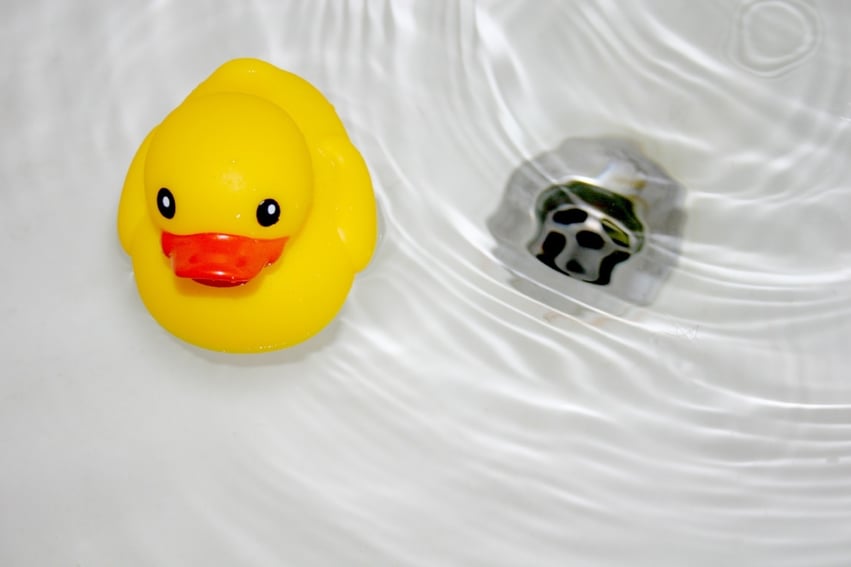4 Reasons to Stay Away from Chemical Drain Cleaner
 No matter how well they’re labeled, how good they smell, or how cheap they are, drain cleaners aren’t a good solution to a clog in your plumbing. We know, it’s a hard pill to swallow, but we’re just trying to help. In fact, most homeowners don’t even know that they tend to do more harm than good when they are used. These volatile liquids will rot away your pipes and leave your system needing much more than just a drain cleaning.
No matter how well they’re labeled, how good they smell, or how cheap they are, drain cleaners aren’t a good solution to a clog in your plumbing. We know, it’s a hard pill to swallow, but we’re just trying to help. In fact, most homeowners don’t even know that they tend to do more harm than good when they are used. These volatile liquids will rot away your pipes and leave your system needing much more than just a drain cleaning.
So, you must be wondering what the alternative is? There are several alternatives to chemical drain cleaners, but they all usually involve your local plumber. You see, with your plumbing in Clifton, NJ there are no easy solutions to a drain clog. The best you can hope for is a capable plumber like us to perform a hydro jetting procedure, or use an industrial drain snake to try and pull whatever is clogging your system apart.
However, if you’re still leaning towards the car keys to pick up some industrial cleaner, keep reading and we’ll let you know why we never recommend them.
Innate Toxicity
These chemicals are disgusting and we’re not just talking about our aesthetic preference. No, they’re volatile in a way that will produce fumes that can sting, irritate, and even hurt your nose and eyes. This doesn’t just go for when you open the bottle and pour it down the drain, the fumes linger far beyond when the liquid has been used. If you’d like to keep your bathroom from turning into Chernobyl, we’d recommend refraining from using chemical drain cleaners.
Pipe Destruction
The description on your bottle of drain cleaner might sound convincing. Even the name implies that it will be “cleaning” your drain, but that’s not exactly how they work. You see, chemical drain cleaners contain hydrochloric acid, which pretty much disintegrates anything it comes in contact with. So the “cleaning” you’ve been promised is really just the dissolution of anything inside your drain, including the enamel of your pipes, the expensive furnishes in your kitchen, even the pipes themselves. You wouldn’t believe the number of times we’ve been called in to fix a mistake that these cleaners caused!
Environmentally Unfriendly
These chemical drain cleaners might be terrible for your pipes, but they’re even more terrible for the environment. Since most formulas for these chemical drain cleaners is thick, the bottles that get recycled or thrown out tend to still have some chemical residue left in them. This residue can end up in a landfill and the water supply, which can be pretty awful. Remember those fumes that sting your eyes and nose? Those will end up killing countless animals and poisoning your ecosystem if you’re not careful.
An Abysmal Track Record
Think we’ve convinced you? Well, wait until we tell you that these chemicals don’t even work half the time! As it turns out, drains aren’t always clogged by a blockage in your plumbing system. Sometimes there can be a broken pipe, trouble in your sewer line, or some other hidden issue that’s causing a drain clog. So, dumping chemicals down the drain won’t do anything to solve that problem!
Do us and yourself a favor, call a plumber to give your plumbing the attention it deserves.
Got a clogged drain? Give us a call at Margo Plumbing Heating Cooling Inc. We can give you a solution that works.
This post first appeared on https://margoplumbing.com


 There are so many different reasons as to why your bathtub drains slowly. Luckily, there are a few simple methods to fix it that could save you from having to call a plumber. A slow bathtub drain can result from any of the following combinations (or all of them):
There are so many different reasons as to why your bathtub drains slowly. Luckily, there are a few simple methods to fix it that could save you from having to call a plumber. A slow bathtub drain can result from any of the following combinations (or all of them): Factors That Impact your Air Filter
Factors That Impact your Air Filter